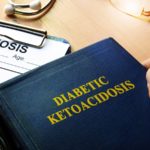
Although they may sound the same, they are in reality, quite different.
While ketosis is a typical metabolic process with many advantages, ketoacidosis in not, and can be dangerous for your health.
So what exactly is the difference?
Ketosis
Ketones are created when fasting, or eating a diet low in carbs and sugar, and/or taking supplements such as MCT oil or BHB.(more on this below)
The body will then use these ketones as a fuel source instead of carbs and sugar.
There are established benefits of using Ketones as fuel or “Being in Ketosis” which include:
- Weight Loss
- Appetite regulation
- Reversal of diabetes and prediabetes
- Seizure Management
- Potentially enhanced athletic performance
And of course, from personal experience, I find managing my blood sugar much easier when I follow a low-carb / ketogenic diet.
Ketoacidosis
This is a condition that primarily occurs in those people with type 1 diabetes if they are not getting enough insulin to supply their needs.
Ketoacidosis can also occur in those people with type 2 diabetes who take medications known as Flozins which are SGLT-2 inhibitors. These include empagliflozin, canagliflozin, dapagliflozin, and ertugliflozin
In the cases of diabetic ketoacidosis, which is also known as DKA, both ketones and blood sugar rise to levels that disrupts the acid-base balance in the blood.
Because ketones are acidic molecules, high levels of ketones (10 mmol/L or above) can cause the blood to become more acidic which prevents the body’s processes from working normally. When ketone levels in DKA are too high, the blood becomes dangerously acidic. Unchecked, even for a short period of time, this impairs the function of the brain and other organs and can be life threatening.
What is important to remember here is that it’s the high blood sugar that needs to be addressed.
Other factors that can create ketoacidosis include experiencing a stroke or heart attack or going through physical or emotional trauma. These are high-stress triggering events.
What are the indicators of Nutritional Ketosis and Ketoacidosis?
BHB (Beta-Hydroxybutyrate) is an energy-dense molecule produced during periods of low carbohydrate consumption and naturally fuels your brain, heart, and muscles.
When in nutritional ketosis, BHB levels typically stay below 5 mmol/L. However, in diabetic ketoacidosis, BHB levels of 10 mmol/L or above, are not uncommon and is directly related to their inability to produce insulin.
How can Ketoacidosis be avoided?
Make certain that your blood sugar is optimized by checking your blood sugar and familiarizing yourself with symptoms of Ketoacidosis which include:
- Frequent Urination
- Thirst
- Dry Mouth
And in more advanced stages:
- Nausea
- Vomiting
- Severe Abdominal Pain
- Trouble Breathing
- Confusion
- Extreme fatigue
As you might be already aware of, the list above are typical symptoms of untreated diabetes and the key is to make sure your blood sugar is optimized.
My personal experience
I started my journey into the low-carb / keto lifestyle the day I came out of the hospital after being diagnosed with type 1 diabetes at the age of 32.
I have never myself experienced ketoacidosis. The simple reason for this is that with the keto diet I can regulate my blood sugar with ease, and I don’t get massive blood sugar spikes. The blood sugar roller coaster is thankfully a thing of the past and I’m grateful for a diet that makes living with diabetes easier.





